Blowback vs. Locked Breech Handguns: What’s the Difference?

If you are in the market for a semi-automatic pistol, the two most popular designs are locked breech, otherwise known as recoil-operated or blowback-operated. As with so many things in the gun world, these terms are often thrown around without explanation when mouthing off general descriptions. But understanding both designs is material to how you perform with your new handgun on the range and in the gravest extreme. With that in mind, what is the difference between blowback and locked breech handguns, and why does it matter? I’ve owned my fair share of both handguns over the years, and both systems are not created equal. Let us explore.
Locked Breech Pistol Operation
Both recoil-operated and blowback-operated pistols rely on Newton’s Third Law of Motion. For every action, there is an equal and opposite reaction. When a pistol is fired, the gas pressure takes the path of least resistance out of the barrel and brings a bullet along. The same energy that propels that bullet also propels the heavier handgun rearward into your hand. This is recoil or kickback.
Since both designs technically use recoil to operate, it is easier to categorize recoil-operated pistols as locked breech designs to differentiate them from blowback handguns. Blowback pistols have barrels that do not lock in place when fired. They are fixed in place, and the slide and recoil spring do all the work. Locked breech pistols are locked in place upon firing and unlock once the bullet leaves the barrel and gas pressures have dropped to safe levels. These pistols rely on recoil to do so. When the pistol is in its rearward motion, the barrel slips out of its locked position and frees the rest of the pistol to cycle.
The Old and the New
Locked breech pistols have existed since the very first semi-auto pistol. The Borchardt C93, which debuted in 1893, was the first autoloading pistol produced in any number. It used a toggle locking action that was later refined and copied in the Luger. However, locked breech pistols, as we know them today, use a tilting breech, falling block, or rotating barrel.
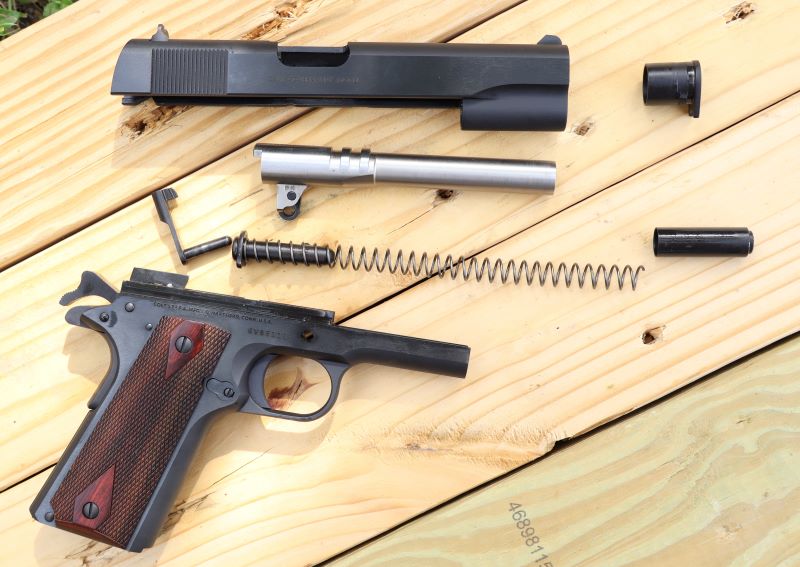
Browning as a Pioneer
The tilting barrel design was pioneered by John Browning and is, by far, the most likely locked breech design you will run into. The Colt 1902 was the first pistol to feature the design, but it was refined into its near-final form in the Colt Model 1911 service pistol. The slide is the one moveable section of the pistol under recoil. At first, both the frame and slide recoil together. But at some point, the barrel drops from its locking lugs in the slide and is forced down and rearward into a recess in the frame. The slide continues rearward and then forward again with the help of the recoil spring to force the barrel back to its locked position. In two motions, the empty case is out, and a new round is chambered and ready to fire.
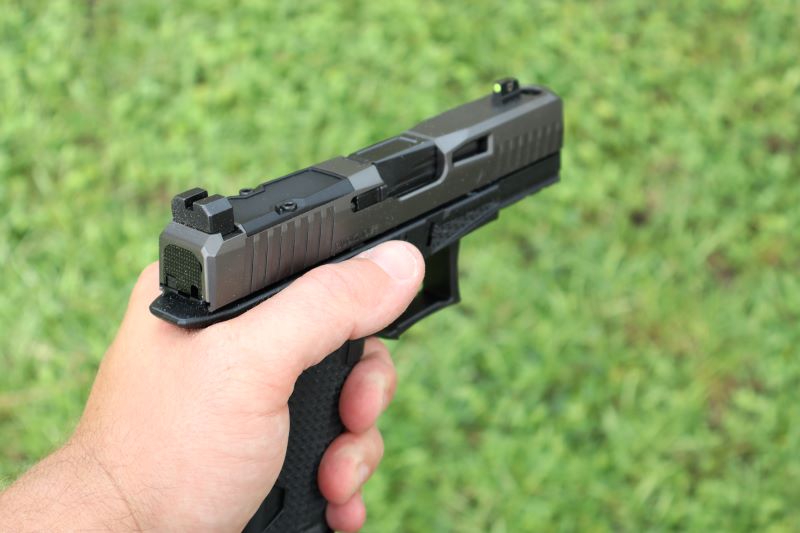
The tilting breech design was popularized by the 1911 and refined with the Browning Hi Power. The design was further simplified, most notably by Sig Sauer in their P220 pistol that debuted in 1975. It omitted lugs and recesses hidden within the slide to use the ejection port as the locking point. Glock, Smith & Wesson, and most pistol makers have since gone to this principle.
The Browning tilting breech is the most popular locked breech design but not the only one still in current use. The Walther P38 of World War II fame had a barrel that moved with the slide but incorporated a separate locking block that fell and rose under recoil with the barrel. This was copied in the Beretta 92 series of handguns. Interestingly, Beretta is one of the few makers producing a rotating barrel design in their Px4 Storm. It works similarly to the 1911, except the lugs are replaced by helical cuts and grooves that rotate the barrel to unlock.
Locked Breech Pistol Pros and Cons
Locked breech pistols excel in the power-to-size category. Blowback pistols rely on the weight of the slide and recoil spring to contain gas pressure. Locked breech pistols can be scaled up and down and will handle more powerful cartridges like 9mm Luger, 10mm Auto, and .45 ACP. It also allows for lighter handguns in smaller calibers, like in traditional blowback rounds like .380 ACP. The barrel movement spreads out the recoil impulse over a longer period of time. This allows recoil-operated pistols to have less recoil than comparable caliber blowback options.
The chief disadvantage of recoil-operated pistols is mechanical accuracy. Blowback pistols have fixed barrels and ensure reliable feeding, as there is no play between the slide and a moving barrel. There needs to be play between the slide and barrel to enable movement. Competitive shooters using locked breech pistols stress tight tolerances, but for most of us, locked breech pistols are more accurate than the shooter.
Blowback Pistol Operation
Blowback-operated handguns date back to the very first slide-operated semi-auto pistol. That pistol was the FN Model 1899, developed by John Browning. It featured an eight-round magazine that fit in the grip of the handgun and was chambered in the then-brand-new .32 ACP cartridge. All the components of a modern pistol are in this design, including the barrel and recoil spring. The barrel had lugs that interfaced with recesses in the frame, locking it in place. It could be taken out for cleaning but is fixed in place when the gun is fired.
A fixed barrel is the key design feature of blowback pistols. With locked breech pistols, the barrel is free to move and unlock, permitting the slide to go rearward once the bullet has left the barrel. In the case of blowback pistols, the barrel stays in place when the round is fired. Once the round leaves the barrel, the remaining gas pressure and recoil throw the slide rearward, and the recoil spring snaps it back in place after a new round is chambered. Blowback pistols work safely by pairing a heavier-weight slide and/or a heavy-weight recoil spring with a lower-powered cartridge.
Design Trajectory and Current Trends
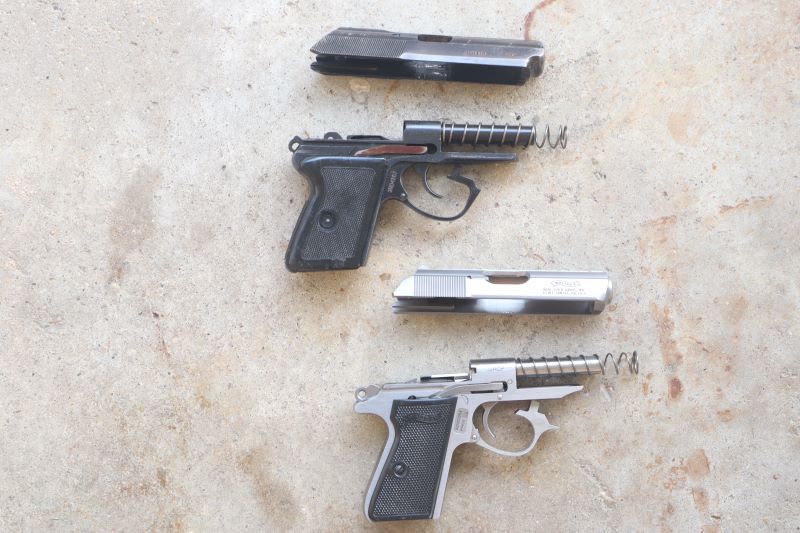
Blowback pistols work safely by pairing a heavier-weight slide and/or a heavier-weight recoil spring with a lower-powered cartridge. From the moment the FN 1899 came out, designers continually attempted to simplify the concept and increase the power factor. Browning developed the .380 ACP and 9x21mm cartridges to give the user a bigger and faster-moving projectile to work with while keeping the fixed barrel design. The German 9×18 Ultra and Russian 9mm Makarov rounds proved to be the most powerful rounds one could get in a practical blowback pistol.
The Walther PPK and Russian Makarov pistols were also simpler than the Browning design. They had barrels that were pinned to the frame and wore recoil springs over the barrel instead of housed in the frame. But beyond these designs, it became more difficult to push the envelope. Mauser attempted to develop a blowback pistol in 9mm Luger in the 1930s, but it failed. Hi-Point managed to do it in the 21st century, but their pistols resemble a brick more than a handgun.
Although popular in years past, blowback pistols are mostly restricted to older designs and facsimiles of those designs. The Beretta Bobcat and Tomcat, as well as Walther PPK and its Argentine clone, the Bersa Thunder 380, are notable examples. But on the whole, semi-auto pistols chambered in lower-powered rounds like .22 LR, .25 ACP, and .32 ACP are going to be blowback operated. Most modern .380 pistols are locked breech, but some, like the aforementioned PPK and Thunder, are not.
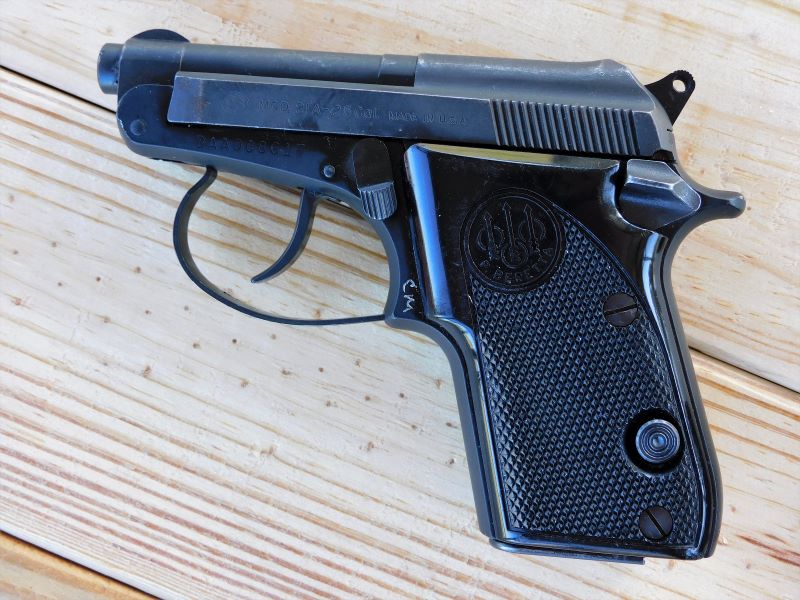
The Pros and Cons of Blowback Pistols
Blowback-operated pistols are certainly less popular now than in the early days of the autoloader. There are good reasons for that, but there are also good reasons to pick one over a locked breech pistol.
Blowback pistols tend to be simpler designs with a barrel, slide, and frame that lack the machining needed for the barrel. Since the barrel doesn’t move, these added costs are not necessary. The need for guide rods and barrel bushings is also dispensed with since most blowback pistols use the barrel to accomplish that task.
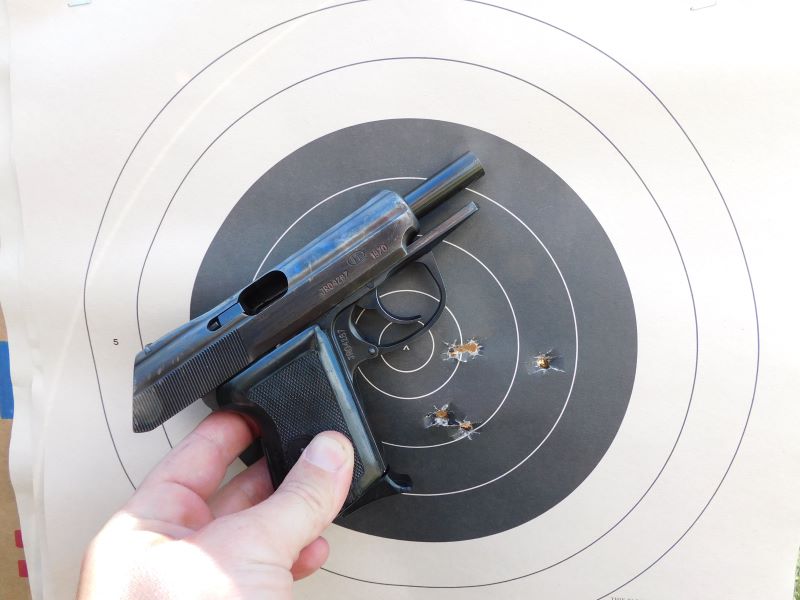
More Advantages
At the risk of being repetitive, one advantage that its advocates swear by is accuracy. Because the barrel is fixed, it locks up with the slide in the same manner time and time again. With no play, the rounds go in the same consistent place. Blowback pistols are renowned for their accuracy, but this may be in part because of the smaller sights seen on many of those handguns. Smaller sights cover up less of a target, and when you are shooting for groups, that is a good thing.
Another advantage that is harder to dispute is that blowback pistols are harder to knock out of battery. Locked breech pistols have safeties that prevent the pistol from firing if the barrel is not in its locked position. Bumping the barrel and slide rearward makes the pistol useless. With a blowback pistol, the fixed barrel is not affected if it is bumped—a worthwhile attribute in a close-hand scuffle.
Disadvantages
But with these advantages come disadvantages. Blowback pistols are confined to lower-powered cartridges. Furthermore, the stiffer recoil spring needed for safe operation can make the slide more difficult to rack. Worse, their heavy springs do not help slow down the slide enough to prevent felt recoil. Locked breech pistols bleed recoil energy through the recoil spring and the movement of the barrel. The energy of the slide comes back into your hand with every shot if you opt for a blowback pistol. In my own shooting, I found a lightweight polymer-framed Ruger LCP to have about the same amount of recoil as a Walther PPK. Both are chambered in .380, and the PPK is all-steel, which should absorb more recoil. But it does not.
Locked Breech Pistols vs. Blowback Pistols: Which to Pick?
Blowback pistols certainly have their place. If you are a fan of legacy designs like the Walther PPK or want a pocket-sized pistol chambered in a sedate caliber, you might opt for that sort of design. It is certainly the go-to option if you are in the market for a good .22 pistol. There is always a place for accurate, small-bore guns. But some of these same guns can be hard to manipulate, particularly if you have thin skin and compromised hands. Most modern pistols are locked breech. These pistols can skimp on weight without sacrificing power and ease of use. Their advantages far exceed their downsides and should warrant your first look, but perhaps not your last.
The post Blowback vs. Locked Breech Handguns: What’s the Difference? appeared first on The Mag Life.
Read the full article here






